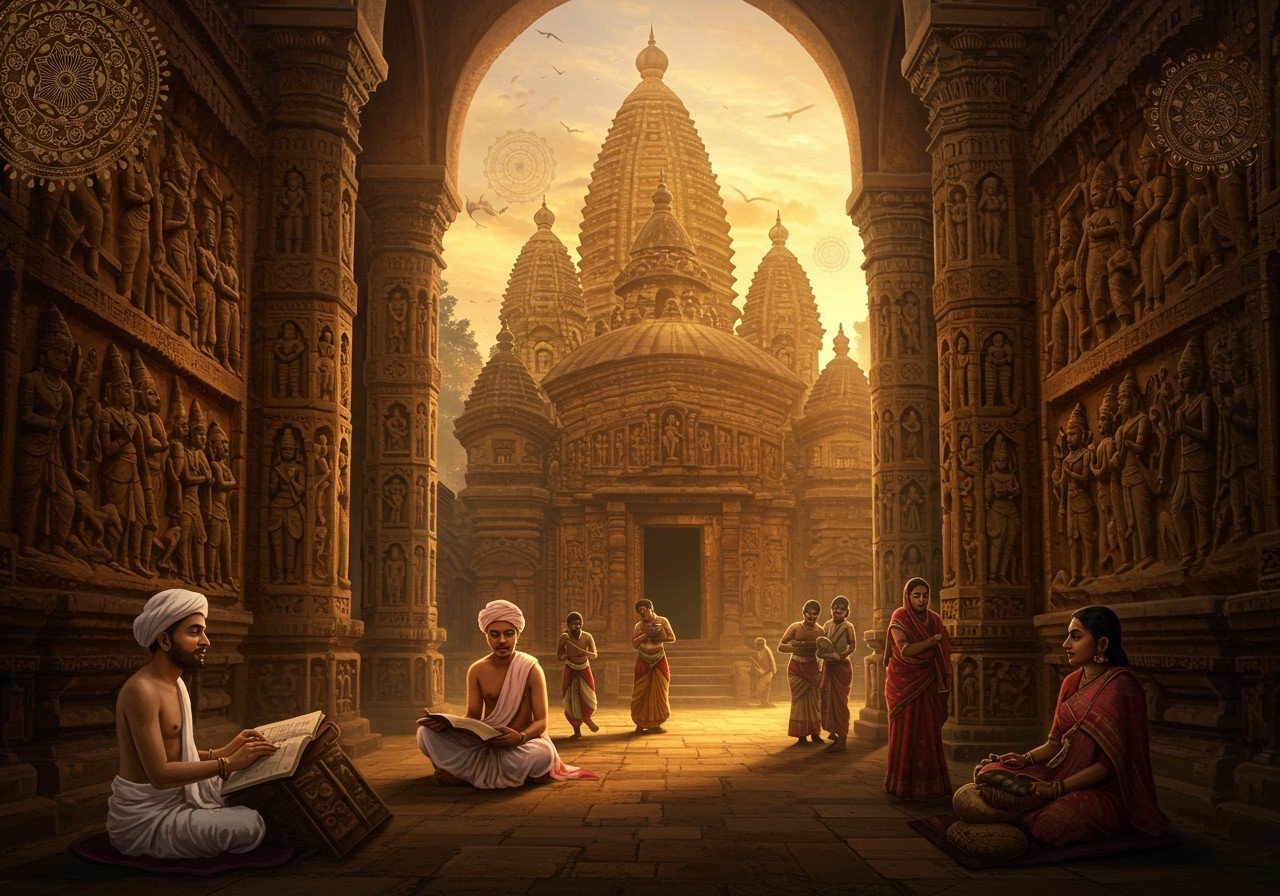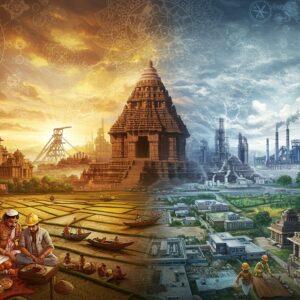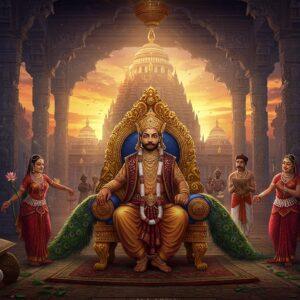
The Sena Dynasty, a Hindu dynasty originating from the Karnata Brahmana-Kshatriya clan in South India, ruled Bengal from the 11th to 12th century AD. They succeeded the Pala Dynasty and brought about a revival of orthodox Hinduism, re-establishing the caste system and introducing hypergamy in Bengali society. The Sena period saw cultural and societal improvements, continuing the peace and contentment from the Pala period. The last notable Sena king was Lakshmanasena, a great patron of culture. This article explores the specifics of the Sena Dynasty’s influence on religion and society, including their religious practices, social reforms, and cultural contributions.
Sena Dynasty Religion
The Sena Dynasty played a crucial role in promoting and preserving Hinduism in Bengal. They restored and built temples, such as the famous Dhakeshwari Temple in Dhaka. The dynasty also supported Brahmins and revived Vedic rituals and traditions. The Puranic texts and other religious scriptures were promoted by the Sena rulers. The dynasty exhibited religious tolerance, allowing various sects and beliefs to coexist.
Key figures like Ballala Sena and Lakshmana Sena contributed to religious reforms. Religious festivals and ceremonies were supported by the Sena Dynasty, impacting the local population and having long-term effects.
Sena Dynasty Gotra
The concept of gotra, or lineage, was significant in the social structure under the Sena Dynasty. Gotra maintained social order and hierarchy. It influenced marriage practices and family lineage during the Sena period. Genealogical records were preserved under the Sena administration. Gotra was connected to religious rituals, emphasizing the dynasty’s efforts to uphold traditions. This system influenced social mobility and caste dynamics.
Sena Dynasty Emblem
The royal insignia of the Sena Dynasty symbolized their authority and cultural identity. The emblem’s design and symbolism asserted the legitimacy and divine right of the Sena kings. It was used in official documents, coins, and architectural motifs, fostering unity and loyalty among subjects. The emblem reflected artistic and cultural contributions. Historical artifacts and archaeological sites show examples of the Sena emblem, influencing subsequent regional emblems.
Social Reforms Under Sena Dynasty
The Sena rulers implemented various social reforms that shaped Bengal’s society. Land grants improved agricultural productivity and social hierarchy. Laws were codified to ensure justice and order. The Sena kings promoted education and established learning centers. Reforms improved women’s status, allowing their participation in religious and social activities. The caste system and social stratification were influenced by the dynasty’s policies. Infrastructure development included roads, irrigation systems, and public buildings.
Cultural Contributions
The Sena Dynasty made significant cultural contributions to Bengal. They patronized literature and the arts, supporting poets and scholars. Architectural achievements included constructing temples and monuments. The Sena Dynasty also played a pivotal role in preserving regional languages and scripts. Their support for traditional crafts fostered economic growth and cultural exchange. The dynasty’s cultural policies left a lasting impact on Bengal’s identity and heritage.
Through their patronage of music and dance, the Sena rulers promoted classical forms and traditions that enriched Bengal’s cultural tapestry. The legacy of their contributions can still be felt in contemporary society, highlighting the enduring influence of this remarkable dynasty.
How Poojn.in Helps Preserve Sena Dynasty’s Religious Legacy Today
Poojn.in offers essential items for worshipping the main deities that were prominent during the Sena Dynasty period (11th-12th century AD). As the Senas were strong supporters of Hinduism, particularly Shaivism and Vaishnavism, we provide authentic puja items for:
- Complete puja sets for Lord Shiva worship: From traditional rudraksha beads and damrus to incense and lamps, we offer everything needed for Shiva puja. Our Shiva lingams are crafted with care and reverence, ensuring authenticity and quality.
Learn more about Lord Shiva. - Traditional items for Lord Vishnu prayers and rituals: We provide shaligram stones, conch shells, and other essential items for Vishnu devotees. Our range includes high-quality sandalwood paste and tulsi malas, integral to Vishnu worship.
Explore Lord Vishnu and his mount, Garuda. - Worship materials for Lord Brahma ceremonies: Though less commonly worshipped, we also offer items for Brahma puja, including specific mantras and yantras. Our collection includes rare herbs and flowers traditionally used in Brahma ceremonies.
Discover more about Lord Brahma.
Our carefully curated collection includes:
- Pure copper and brass items for temple offerings
- Traditional Bengali-style puja thalis
- Authentic dhoop and agarbatti (like our Kushal Mangal sandalwood incense) from trusted manufacturers
- Sacred threads (available in various colors) and religious clothing
- Ritual bells and conch shells
We ensure all items meet traditional specifications while offering the convenience of online shopping. Our products help modern devotees maintain the same level of ritual authenticity that was important during the Sena period (11th-12th century AD).
Visit www.poojn.in to explore our full range of puja items that help preserve these important religious traditions. We deliver across India with secure packaging to protect sacred items.
Conclusion
The Sena Dynasty’s impact on Bengal’s religion and society remains significant even today. By promoting Hinduism, supporting Brahmins, and preserving Vedic rituals, they reinforced the spiritual foundation of the region. Their attention to social structures like gotra ensured order and continuity. The royal emblem symbolized unity and cultural pride, while their social reforms improved the lives of many, including women. The dynasty’s cultural contributions enriched Bengal’s heritage, leaving a lasting imprint on its identity. The Sena Dynasty’s legacy lives on, reminding us of the importance of tradition and the benefits of wise leadership.
FAQs: Sena Dynasty’s Impact: Religion and Society
What is the Sena Dynasty? The Sena Dynasty was a Hindu dynasty that ruled parts of Bengal during the 11th and 12th centuries AD.
How did the Sena Dynasty impact religion? The Sena Dynasty significantly impacted religion by promoting Hinduism and constructing numerous temples, contributing to religious practices and architecture.
What were the main religious beliefs of the Sena Dynasty? The Sena Dynasty adhered to Hinduism, supporting the worship of deities like Vishnu and Shiva.
What is the significance of the Sena Dynasty’s gotra? The Sena Dynasty belonged to the Vatsa gotra, often mentioned in historical texts and genealogies.
What kind of emblem did the Sena Dynasty use? The Sena Dynasty’s emblem typically featured Hindu symbols like the lotus and conch.
How did the Sena Dynasty influence society? The Sena Dynasty influenced society by promoting Hindu culture, arts, literature, and establishing a structured administrative system.
Were there any major temples built by the Sena Dynasty? Yes, the Sena Dynasty built several significant temples, including the Dhakeshwari Temple in Dhaka, which remains standing today.
Why is the Sena Dynasty important in history? The Sena Dynasty holds historical importance for its contributions to religious practices, societal structure, and cultural advancements in Bengal.


